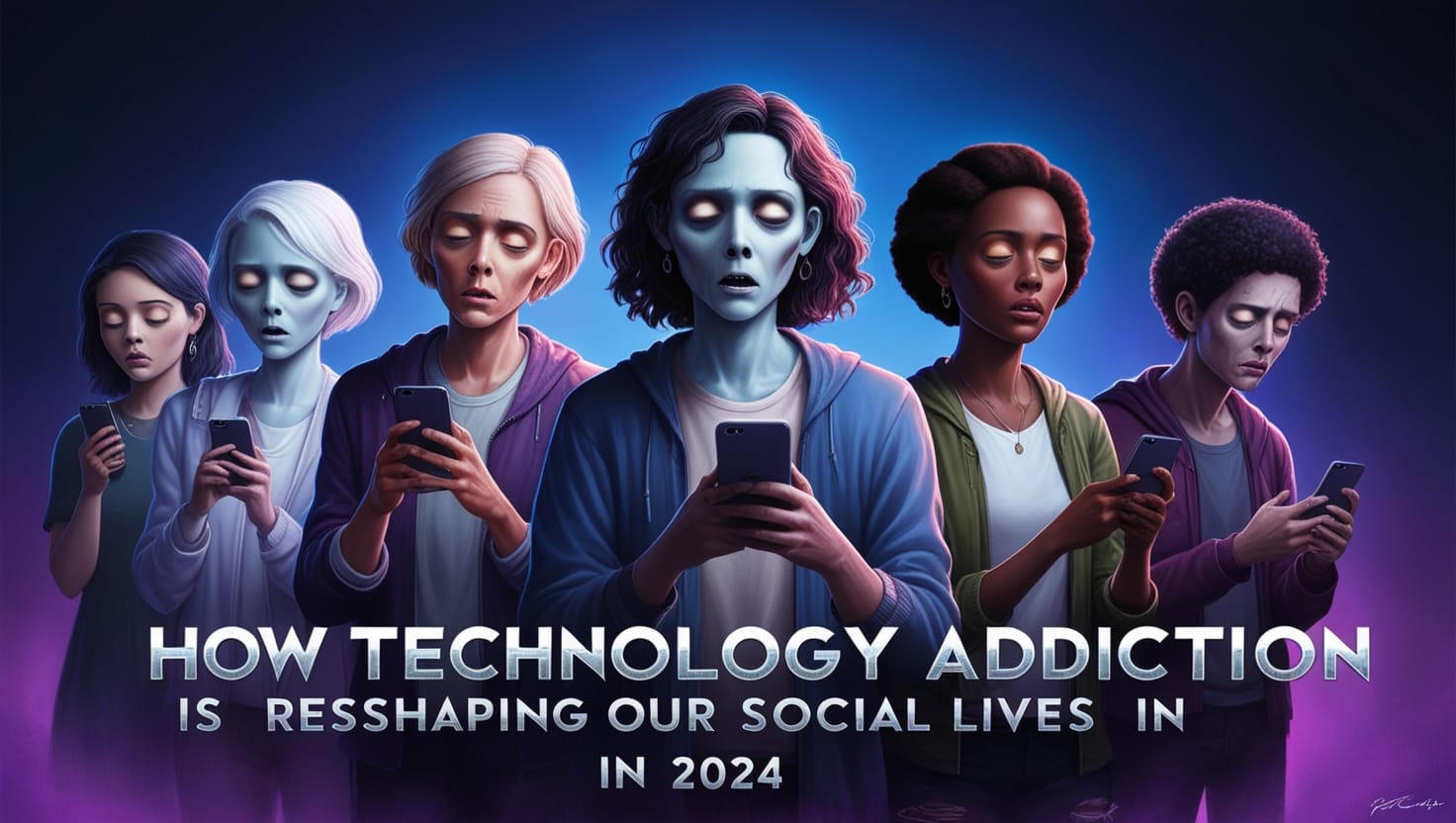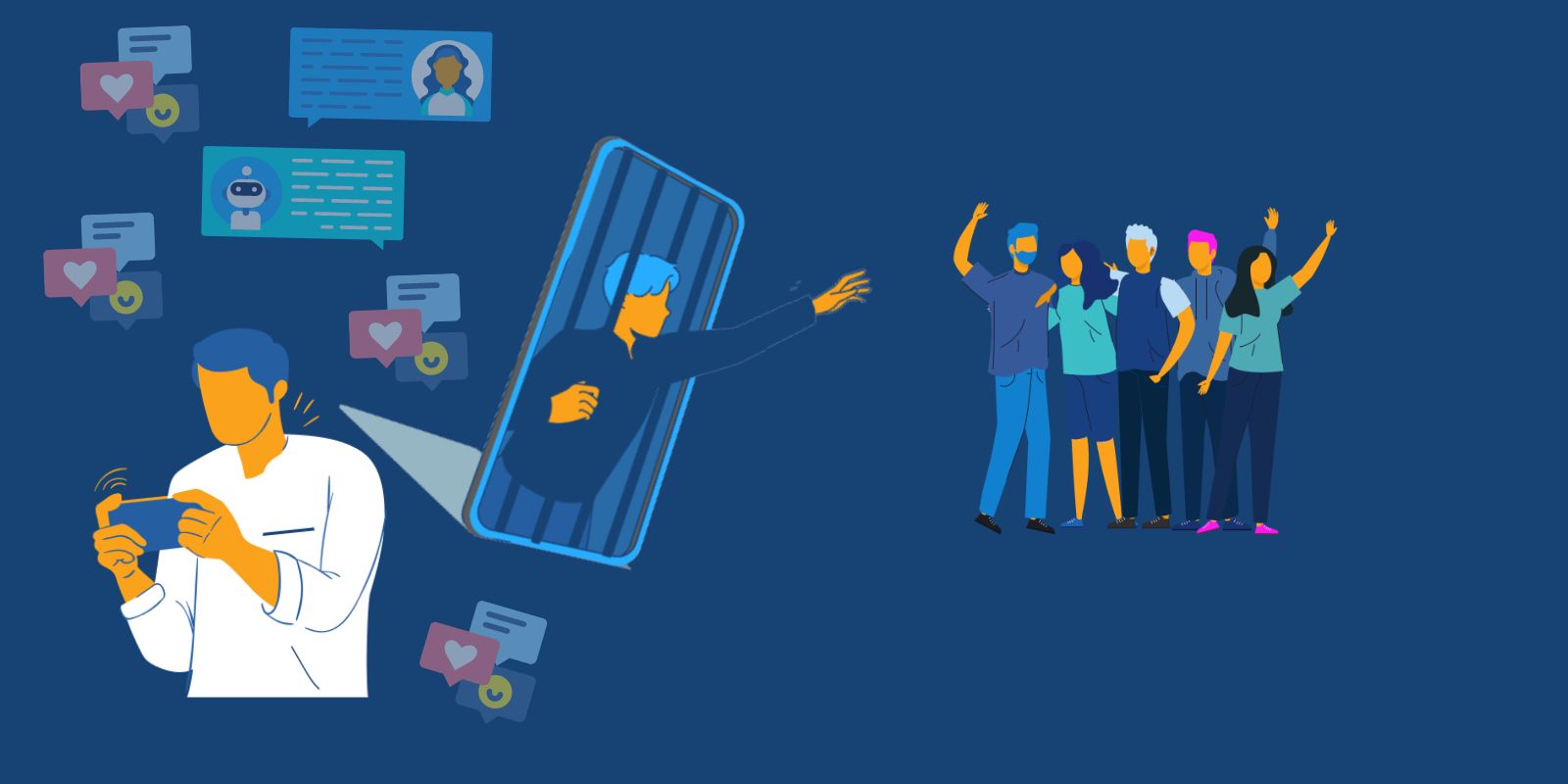
How Technology Addiction Is Reshaping Our Social Lives in 2024-In 2024, the conversation around technology addiction has reached a critical point. As digital devices become increasingly embedded in our daily routines, understanding the impact of technology addiction on our social lives has never been more important. While technology connects us in ways we couldn’t have imagined a decade ago, it also raises questions about the quality of those connections. Let’s explore how this addiction is reshaping our social interactions, relationships, and overall sense of community.
The Rise of Technology Addiction

Technology addiction refers to the compulsive use of digital devices, leading to a neglect of real-world interactions and responsibilities. In 2024, nearly 50% of adults report feeling overwhelmed by their device usage. With social media, instant messaging, and gaming platforms constantly vying for our attention, it’s easy to see how people can become addicted. The dopamine hits we receive from likes, shares, and notifications create a feedback loop that reinforces this behavior.
Virtual Connections vs. Real Connections
One of the most significant impacts of technology addiction is the shift in how we form and maintain relationships. While platforms like Facebook, Instagram, and TikTok allow us to connect with friends and family across the globe, they often lack the depth of face-to-face interactions. In 2024, many people find themselves with hundreds of online friends but feel lonelier than ever.
Research indicates that while we’re more connected digitally, the quality of our relationships may suffer. Many individuals express a desire for deeper connections, yet they often opt for the convenience of digital communication. Video calls can bridge the gap, but they rarely replicate the warmth of an in-person conversation. (Read More: How the Technology Acceptance Model is Shaping User Adoption in 2024)
The New Social Norms

As technology addiction becomes more prevalent, new social norms are emerging. In many social settings, it’s now common to see groups of friends engrossed in their phones rather than engaging with one another. This behavior can lead to what some experts term “phubbing,” or phone snubbing, where individuals ignore their companions in favor of their devices.
In 2024, many people are beginning to recognize the importance of “phone-free” zones or times, such as during meals or family gatherings. These small shifts aim to foster a more present and engaged atmosphere, reminding us that while technology can enhance our lives, it shouldn’t replace genuine human interaction.
Mental Health Implications
The implications of technology addiction extend beyond social dynamics; they significantly impact mental health. Increased screen time has been linked to heightened feelings of anxiety, depression, and isolation. In 2024, mental health professionals emphasize the need for digital detoxes—intentional breaks from technology to reconnect with ourselves and the people around us.
Moreover, as individuals become more aware of their technology usage, there’s a growing movement toward mindfulness in digital consumption. Many are adopting practices like setting boundaries on screen time or engaging in tech-free activities, such as hiking or reading, to cultivate a healthier balance. (Read More: How EOS Technology Drone is Revolutionizing Aerial Photography in 2024)
Building Communities in the Digital Age

Interestingly, technology addiction is also fostering new forms of community. Online groups and forums have become a haven for individuals with shared interests, providing a platform for support and connection that may not be available locally. In 2024, communities centered around hobbies, mental health, and activism thrive online, proving that technology can indeed build connections.
However, the challenge lies in ensuring that these online communities translate into real-world interactions. Many are now advocating for hybrid models where online friendships lead to offline meetups, creating a more integrated social experience.
Navigating the Future
As we move forward, it’s essential to strike a balance between our digital and physical lives. Technology addiction isn’t going away anytime soon, but we can learn to manage it more effectively. Embracing the idea of digital wellness—understanding our tech habits and their effects on our social lives—can empower us to make healthier choices.
In 2024, it’s about creating a culture that values authentic connections over digital validation. By encouraging mindful usage of technology, we can foster environments where people feel valued, understood, and connected—both online and offline. (Read More: Exploring the Impact of the Technology Acceptance Model on Modern Workplace Technologies)
Conclusion article How Technology Addiction Is Reshaping Our Social Lives in 2024
Technology addiction is reshaping our social lives in profound ways, presenting both challenges and opportunities. As we continue to navigate this digital landscape, we must remain conscious of how our device usage affects our relationships and well-being. By promoting healthy habits and fostering genuine connections, we can enjoy the benefits of technology while mitigating its potential drawbacks. The key lies in finding balance—a journey that begins with awareness and intentionality.






1 thought on “How Technology Addiction Is Reshaping Our Social Lives in 2024”